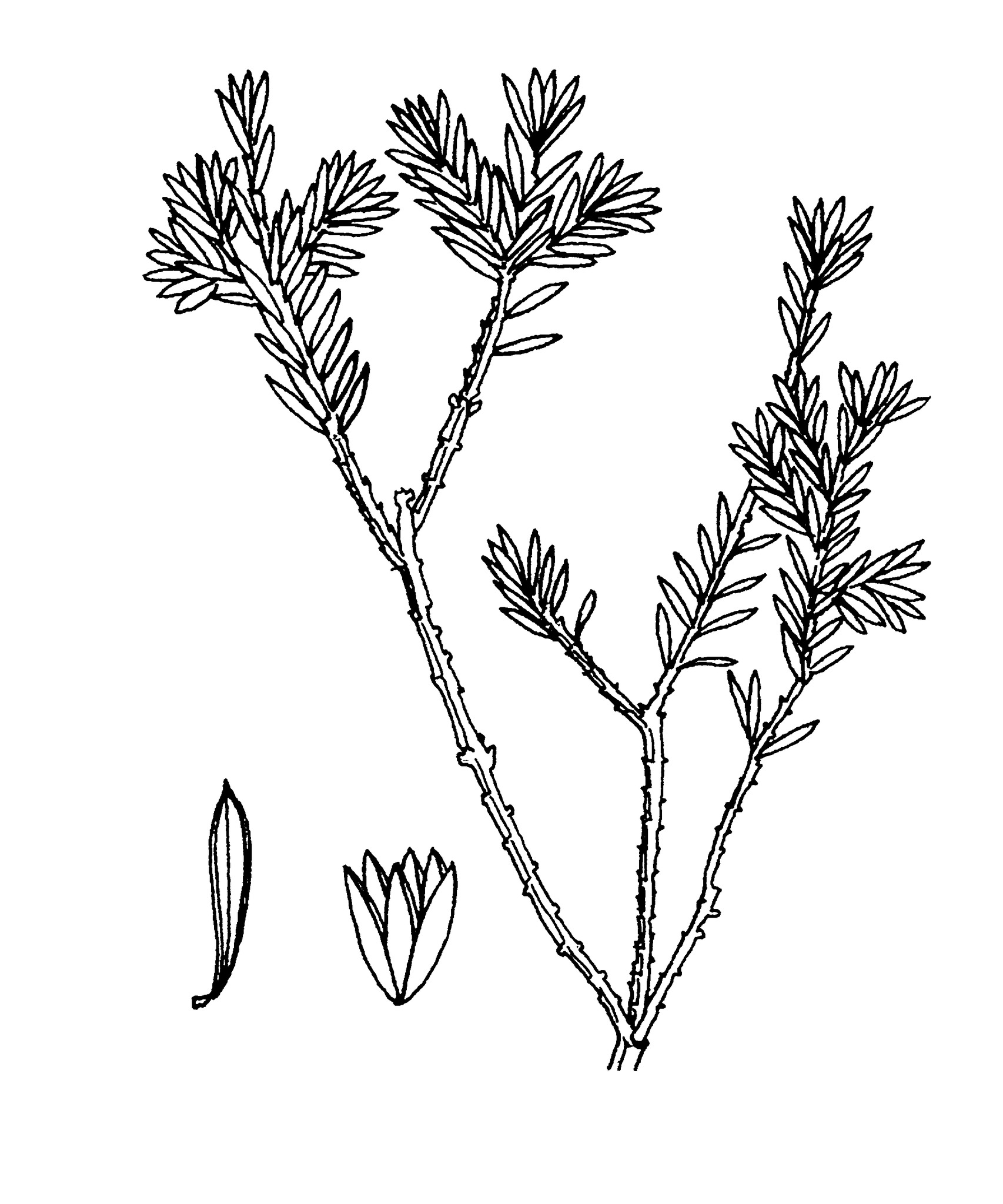
From the Greek pseudos — false, and anthos — flower, referring to the floral arrangement emulating a single flower.
Subshrubs or shrubs, evergreen, perennial, male and female flowers on the same plant; stems and foliage without latex. Indumentum of simple, multicellular hairs. Stipules entire, inconspicuous, persistent. Leaves alternate or opposite, stalked, unlobed, penninerved, without glands; margins entire. Inflorescences axillary, with single or clustered flowers.male flowers stalkless to stalked; calyx lobes 3, edge to edge, shortly fused at base; petals 3; disk absent; stamens 3-15, filaments free or shortly fused at the base. Female flowers stalkless to stalked; calyx lobes 3, edge to edge, shortly fused at base; petals 3; disk absent; ovary 3-chambered, ovules 2 per chamber; styles 2, shortly fused at base, simple. Fruits capsular, dehiscent, 1-lobed, surface smooth. Seeds cylindrical; carunculate, arilloid.
Endemic to Australia with about 10 species. 1 species is commonly cultivated.
Seeds.
Calyx and corolla parts very similar in appearance and markedly linear-lanceolate.
Source: (2002). Euphorbiaceae. In: . Horticultural Flora of South-eastern Australia. Volume 3. Flowering plants. Dicotyledons. Part 2. The identification of garden and cultivated plants. University of New South Wales Press.
